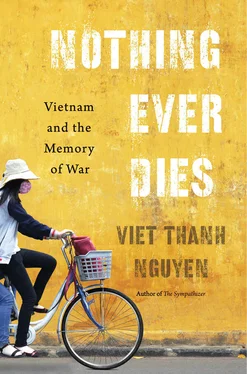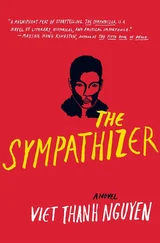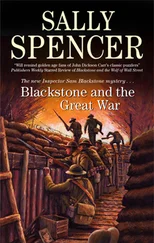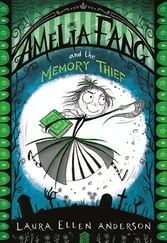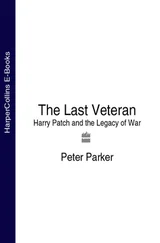While Korea of the past may have been a vassal, Korea of the present pushes back, a competitor who demands worldwide recognition, both for its people and its products. In a world of global capitalism, commodities are more important than people and often travel more easily than people do. Like people, commodities are valued in different ways, expensive Korean goods more fashionable than cheap Chinese ones. In the case of Vietnam, one can find both expensive Korean products and expensive Korean people. Koreans have returned in unarmed force, as tourists, business owners, and students. Korea is seen everywhere, in hairstyles, pop music, movies, melodramas, and malls. For most Vietnamese, Korea and Koreans are spectacular images of a beckoning modernity, regardless of the realities underneath. For both Koreans and Vietnamese, this modernity requires amnesia about their previous shared past. Thus, while Korean commodities can be seen everywhere, memories of the Korean war in Vietnam are still hard to come by, even in their cinematic form.
When Vietnamese do recall Koreans, the memories are negative. At the Museum of the Son My Massacre, better known as the My Lai Massacre, a plaque in English and Vietnamese remembers the “violently atrocious crimes of the American aggressor and the South Korean mercenaries.” 43The South Vietnamese who fought alongside Korean soldiers did not care much for them either. Nguyen Cao Ky, air marshal and vice premier of the Republic of Vietnam, accused them of corruption and black marketeering. 44Average soldiers resented that American soldiers favored the Korean troops, whom they thought more aggressive. To add insult to injury, the Americans even made the South Vietnamese army buy Korean soy sauce to replace Vietnamese fish sauce. 45The Vietnamese civilian view of the Korean soldiers was worse, for some of the Vietnamese remembered how, during World War II, when the country was under Japanese occupation, Korean soldiers were in charge of the prison camps. 46And, according to Le Ly Hayslip, a peasant girl caught in the ground war in central Vietnam:
More dangerous [than the Americans] were the Koreans who now patrolled the American sector. Because a child from our village once walked into their camp and exploded a Viet Cong bomb wired to his body, the Koreans took terrible retribution against the children themselves (whom they saw simply as little Viet Cong). After the incident, some Korean soldiers went to a school, snatched up some boys, threw them into a well, and tossed a grenade in afterward as an example to the others. To the villagers, these Koreans were like the Moroccans [who helped the French] — tougher and meaner than the white soldiers they supported. Like the Japanese of World War II, they seemed to have no conscience and went about their duties as ruthless killing machines. No wonder they found my country a perfect place to ply their terrible trade. 47
As anthropologist Heonik Kwon notes, this behavior by Korean troops was hardly surprising. Their slogans included “kill clean, burn clean, destroy clean,” “children also spy,” and “better to make mistakes than to miss.” 48
This litany of memories testifies to the ways that the Vietnamese remember, but mostly forget, Korean soldiers. These fragmentary memories are overwhelmed by the general Vietnamese indifference to the Korean war in Vietnam, and outnumbered by the stories found in Korean novels, films, and even music videos such as that of pop star Jo Sung Mo’s 2000 smash “Do You Know?” 49This epic account of Korean soldiers giving their lives to rescue Vietnamese civilians ends with a Viet Cong firing squad massacring the last living soldier and his Vietnamese lover. “Why is this happening to us?” the soldier cries. The video’s postscript renders explicit the sense of Korean victimization: “The Vietnam War was a pure tragedy,” it says. “There’s no winner or loser.” At least when it comes to remembering Koreans, the Vietnamese, for the most part, appear willing to agree. 50After all, both money and marriages must be made between Korea and Vietnam in the postwar era, and memories of murder only interfere.
Korean stories of the war allow Korea to criticize the United States, acknowledge some degree of Korean complicity, and absolve Koreans of any crimes committed in Vietnam. Cleansed by these narratives, Korea embraces its new role in global capitalism, where money powers memory and memory powers money. As a nation’s wealth makes its memories circulate ever wider, weaponized memory in turn justifies how the nation’s money was earned, effacing the bloody traces left by those who fought to make those profits possible. The reach of Korean popular culture, in novels, films, music, and commodities, testifies to an emergent Korea’s power. Korea may like to think of itself as a victim — of Japan, of America, of North Korea — but it is also more than that. Koreans may have been cronies, surrogates, or proxies in the Cold War and afterward, but Korea has learned well from its masters. A good student, Korea has graduated from subhuman to subimperial status, and its graduation influences how Korea deals with Vietnam of the present, the Vietnam of its past, and the shadow of its American patron. Once a backwater province humiliated by Japan and subordinated by the United States, Korea has become a chic and sleek global minipower whose projection of itself takes place not only in the factory, the boardroom, the stock market, and the United Nations but also in movie theaters, on televisions, in books, and in architecture signifying might and prowess, intended to intimidate and impress both citizen and tourist.
This weaponized memory foregrounds the humanity of the ones who remember, but inhumanity is in the background of its operations too. The most obvious inhuman acts by Koreans were directed at the Vietnamese people, but becoming subimperial for Koreans also involved absorbing the inhumanity of Korea’s imperial patron, the United States. A trace of that inhumanity is found in the words “Freedom is not free,” which come from America and are featured on the Korean War Memorial in Washington, DC, dedicated in 1995, a year after the War Memorial of Korea debuted. This slogan has circulated widely, appearing also on the Lao Hmong American War Memorial of Fresno, California, dedicated in 2005 to the American allies who fought in Laos during the “Secret War.” One is also likely to hear “freedom is not free” on many American patriotic occasions, although its original context from 1959 is rarely given or remembered: “I am afraid that too many of us want the fruits of integration but are not willing to courageously challenge the roots of segregation. But let me assure you that it does not come this way. Freedom is not free. It is always purchased with the high price of sacrifice and suffering.” 51Black soldiers fought in American wars, and now, “America, we are simply asking you to guarantee our freedom.” 52Martin Luther King Jr. is saying that America wages wars overseas in the name of protecting the freedom of others, but is reluctant to wage war against racism at home. In the capitals of both the United States and Korea, beneath the stirring calls for freedom, unfreedom echoes.
Koreans became human in the time of global capitalism, but at what cost, and to whom? This is a question not just for Korea. When Koreatown burned in Los Angeles, the question of human life and its value had to be asked, too. Korean businesses suffered hundreds of millions of dollars in losses, and the pain for Korean Americans was real. But while property defined Korean losses, at least Koreans had property to lose. While Latinos lost property too — about 40 percent of the total damages, compared to 50 percent for Koreans — their losses were also measured in terms of crime and life, as was the case for African Americans. Most of those arrested were black and Latino, as were most of those who died. One Korean American died. 53The body count matters, as it did during the wars in Vietnam and Korea, because that count tells us whose lives were worth more. In the process of serving as foot soldiers on the front lines of a battle fought for capitalism, Korean and Korean Americans became more valuable — more human — than blacks or the blackened, at least in the militarized memories of America and Korea. To be human not only means the capacity to bomb others in long-range wars of pacification, or exercise overwhelming industrial firepower, or profit from capitalism. In America, it also means being remembered as the model minority; in Korea, it means having the capacity to conduct strategic memory campaigns, to exercise surgical memory strikes, to reinvent the past. Korean veterans of that other Korean war can even erect a small memorial in Vietnam, though that country does not have the power to remember itself in Korea. Memory, like war, is often asymmetrical.
Читать дальше
